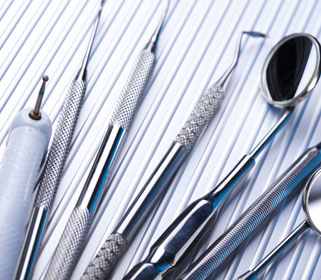Home » Medical Supplies & Equipment » Recognizing The Signs Of Juvenile Diabetes » Recognizing The Signs Of Juvenile Diabetes
Recognizing The Signs Of Juvenile Diabetes
Juvenile diabetes is also more commonly known as Type 1 diabetes. It was historically known as juvenile diabetes since it was most commonly seen in children and adolescents. There is currently no cure for Type 1 diabetes but, with insulin therapy, healthy diet and routine exercise people with the condition can manage the symptoms and lead very normal lives. It is important for children and adolescents with juvenile diabetes to learn how to monitor their blood sugar and how to manage their insulin treatments. Education for kids and parents including camps and weekend seminars for the entire family with a focus on managing Type 1 diabetes are highly recommended.
The signs of Type 1 diabetes can occur at any age but are often most commonly detected prior to adulthood. When the condition occurs because of or after a viral infection the symptoms can develop very quickly and may be mistaken as a complication or effect of the virus. Common viruses associated with the development of juvenile diabetes include the mumps virus, Epstein-Barr, cytomegalovirus and coxsackievirus, all commonly found within the general population. The coxsackievirus is often referred to as hand-foot-and-mouth disease and is generally mistaken for the flu. Mumps, Epstein-Barr and cytomegalovirus are all viruses found within the Herpesviridae family and may have few if any symptoms in some children and adults.
Most people with Type 1 or juvenile diabetes will experience the following symptoms:
- Increased thirst – this can often be profound with a chronic feeling of dry mouth even after consuming large amounts of liquids. The increased feelings of thirst occur because the high sugar levels in the blood actually draw moisture out of the cells, which is opposite to what occurs when blood sugar levels are normal.
- Increased urination – the increase in fluids drawn from the cells combined with increased fluid consumption leads to the need to urinate frequently, sometimes on the hour. The urine may have a strong or unusual odor. Large amounts of urine without any odor may be a sign of a very rare condition known as diabetes insipidus, which is not the same as juvenile diabetes.
- Blurred Vision – the high levels of sugar in the blood not only draw fluids from the cells of your body, they can also draw it from the tissues of your eye. This results in a change in the shape of the lens of the eye, altering your ability to see images clearly.
- Rapid Weight Loss – when weight loss occurs despite an increase in food consumption or when there is no active dieting or increased exercise program it is often because of diabetes. This occurs because the blood glucose is not getting to the cells and is actually causing your body to deplete stored fatty tissue and muscle. This is not healthy weight loss and it will lead to further health complications.
- Increased Hunger – typically people with Type 1 diabetes have a huge increase in the amount of food they consume. They may crave high fat and high carbohydrate foods as the body is trying to increase the glucose to the cells. However, it is not the glucose levels that are causing the problems, it is the lack of insulin that allows the glucose to enter into the cells to provide the energy. Many people find that even after a large meal they are constantly snacking and never seem to feel "satisfied" after a meal.
In addition most people with juvenile diabetes also have extreme feelings of fatigue. They may have difficulty with mental alertness, concentration and staying awake during the day even though they are actually sleeping more than normal.













